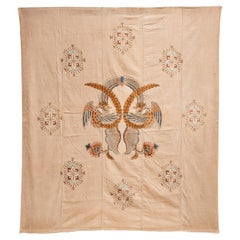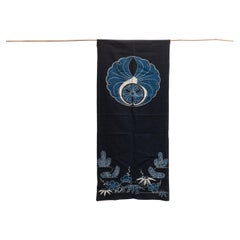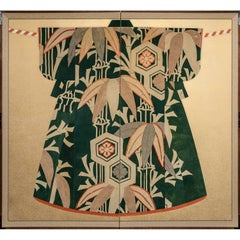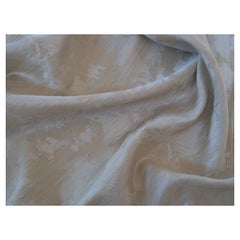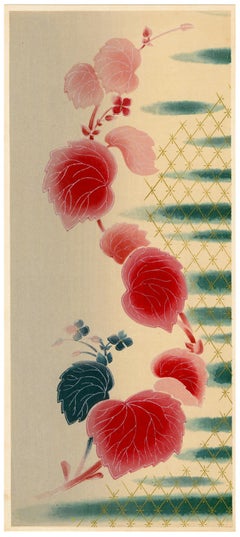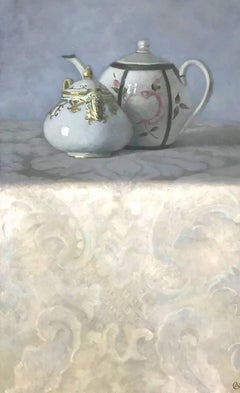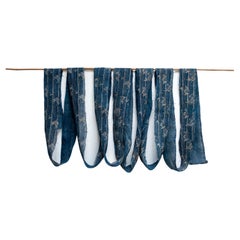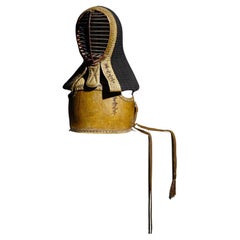Japanese Fabric Art
Vintage 1910s Japanese Textiles
Cotton
Early 20th Century Japanese Textiles
Cotton
Early 20th Century Japanese Meiji Paintings and Screens
Silk, Wood, Paper
Mid-20th Century Japanese Anglo-Japanese Textiles
Silk
Early 1900s Showa Figurative Prints
Woodcut
2010s Realist Still-life Paintings
Oil
Antique 19th Century Japanese Textiles
Fabric
Vintage 1930s Japanese Masks
Leather, Fabric, Rope, Wood
Antique Early 1800s Japanese Japonisme Decorative Art
Fabric, Silk
Vintage 1920s Japanese Decorative Art
Fabric, Wood
Antique 1890s Japanese Japonisme Textiles
Fabric, Silk, Lucite
Mid-20th Century Japanese Paintings and Screens
Fabric
Antique Late 19th Century Japanese Meiji Paintings and Screens
Fabric, Paint
20th Century Japanese Anglo-Japanese Textiles
Metal
Early 20th Century Japanese Paintings and Screens
Fabric, Wood
Early 20th Century Japanese Textiles
Fabric, Textile
Early 20th Century Japanese Taisho Paintings and Screens
Fabric, Wood
20th Century Japanese Showa Paintings and Screens
Fabric
20th Century Japanese Showa Paintings and Screens
Fabric
Antique 19th Century Japanese Meiji Paintings and Screens
Fabric
Vintage 1960s Japanese Mid-Century Modern Textiles
Wood, Fabric
Antique 19th Century French Napoleon III Furniture
Fabric, Wood
20th Century Japanese Showa Paintings and Screens
Fabric
Antique 19th Century Japanese Meiji Paintings and Screens
Fabric
20th Century Japanese Showa Paintings and Screens
Fabric
Early 20th Century Japanese Showa Paintings and Screens
Fabric
20th Century Japanese Taisho Paintings and Screens
Fabric
20th Century Japanese Sculptures and Carvings
Steel
Early 20th Century Japanese Showa Paintings and Screens
Fabric
Antique 19th Century Japanese Meiji Paintings and Screens
Fabric
Mid-20th Century Japanese Showa Sculptures and Carvings
Wood, Fabric, Silk
Antique 18th Century Japanese Japonisme Antiquities
Iron, Gold Leaf
Antique 19th Century Japanese Meiji Paintings and Screens
Fabric
Early 20th Century Paintings and Screens
Fabric, Wood, Lacquer, Paper
Antique Late 19th Century Japanese Edo Sculptures and Carvings
Fabric, Wood
1990s Abstract Abstract Sculptures
Fabric, Textile, Tapestry, Silk
Antique 1820s Japanese Edo Sculptures and Carvings
Fabric, Wood
2010s Contemporary Abstract Drawings and Watercolors
Paper, Mixed Media, Fabric, Oil Pastel, Pastel
20th Century Wall-mounted Sculptures
Fabric
Vintage 1950s Japanese Mid-Century Modern Paintings and Screens
Fabric, Wood, Paper
2010s Japanese Japonisme Antiquities
Fabric, Wood
21st Century and Contemporary Japanese Furniture
Fabric, Yarn, Thread, Silk, Tapestry, Textile
21st Century and Contemporary Japanese Furniture
Fabric, Acrylic, Yarn, Thread, Silk, Textile
21st Century and Contemporary Japanese Furniture
Fabric, Tapestry, Silk, Thread, Yarn, Acrylic
21st Century and Contemporary Japanese Furniture
Gold Leaf
21st Century and Contemporary Japanese Furniture
Fabric, Tapestry, Silk, Thread, Yarn, Acrylic
21st Century and Contemporary Japanese Furniture
Fabric, Textile, Tapestry, Silk, Thread, Yarn
20th Century Japanese Showa Textiles
Silk, Fabric
21st Century and Contemporary Japanese Furniture
Fabric, Yarn, Thread, Silk, Tapestry, Textile
Mid-20th Century Japanese Showa Textiles
Fabric, Silk
Mid-20th Century Japanese Textiles
Fabric, Silk
21st Century and Contemporary Japanese Furniture
Fabric, Textile, Tapestry, Silk, Yarn
21st Century and Contemporary Japanese Furniture
Fabric, Acrylic, Yarn, Thread, Silk, Textile
21st Century and Contemporary Japanese Furniture
Fabric, Acrylic, Yarn, Thread, Silk, Tapestry, Textile
21st Century and Contemporary Japanese Furniture
Fabric, Acrylic, Yarn, Thread, Silk, Tapestry
21st Century and Contemporary Japanese Furniture
Alabaster
21st Century and Contemporary Japanese Furniture
Fabric, Textile, Tapestry, Silk, Thread, Yarn, Acrylic
Mid-20th Century Japanese More Asian Art, Objects and Furniture
Fabric, Paper, Parchment Paper, Silk
21st Century and Contemporary Japanese Furniture
Fabric, Textile, Silk, Thread, Acrylic
21st Century and Contemporary Japanese Furniture
Fabric, Acrylic, Yarn, Thread, Silk, Tapestry, Textile
- 1
Japanese Fabric Art For Sale on 1stDibs
How Much is a Japanese Fabric Art?
- 1stDibs ExpertApril 16, 2024The focus of Japanese art varies. Many traditional Japanese artists sought to capture the beauty of nature in their works. However, other Japanese artists have produced work with Buddhist themes, and contemporary artists working in the country have been inspired by a range of subjects, from socioeconomic and political issues to pop culture. On 1stDibs, explore a large selection of Japanese art.
- 1stDibs ExpertApril 5, 2022The writing on Japanese art is calligraphy art called shodo. It uses Japanese kanji and kana characters. There are a variety of different shodo styles of art, including Kaisho, which is the basic, foundational form of the art. On 1stDibs, find a range of Japanese calligraphy art from top sellers..
- 1stDibs ExpertApril 5, 2022There are a variety of different types of Japanese art. One of the oldest and most admired forms of Japanese art is the art of calligraphy, which originated in the sixth or seventh century. Another type of art, ukiyo-e, is the art of the woodblock print, which depicts scenes of female beauties; kabuki actors, sumo wrestlers and more. You’ll find a variety of Japanese artwork from some of the world’s top art dealers on 1stDibs.
- 1stDibs ExpertApril 5, 2022Many art styles originated in Japan and grew in popularity over the years. Some of the most popular styles include shodo (calligraphy), ikebana, kanou and yamato-e. You’ll find a wide variety of authentic Japanese art from some of the world’s top dealers on 1stDibs.
- 1stDibs ExpertApril 5, 2022What Japanese wall art is called depends on its type. There are numerous kinds of Japanese paintings and prints, including nihonga and ukiyo-e. A Japanese wall scroll is known as a kakejiku or kakemono. On 1stDibs, find a variety of Japanese wall art.
- 1stDibs ExpertSeptember 23, 2024What the Japanese sea art is called depends on its type. Many examples of sea art from Japan are called ukiyo-e. This term refers to woodblock prints made during the 17th, 18th and 19th centuries. The Great Wave off Kanagawa by Katsushika Hokusai is arguably the most famous ukiyo-e print depicting the sea. On 1stDibs, find a wide variety of Japanese woodblock prints.
- 1stDibs ExpertOctober 15, 2024To tell if art is Japanese or Chinese, study the piece's characteristics. With paintings, Chinese artists often use more color and tend to fill their entire canvases, while Japanese artists often include more negative space and choose subtler colors. There are also differences between the brushstrokes typical of traditional Chinese and Japanese art. In Japanese paintings, brushstrokes are often short and sharp. On the other hand, Chinese paintings often display longer, more fluid brushstrokes. Learning about the defining features of various art forms and periods and looking at examples of pieces made by Japanese and Chinese artists can help you learn to spot subtle differences. Explore a diverse assortment of Japanese and Chinese art on 1stDibs.
